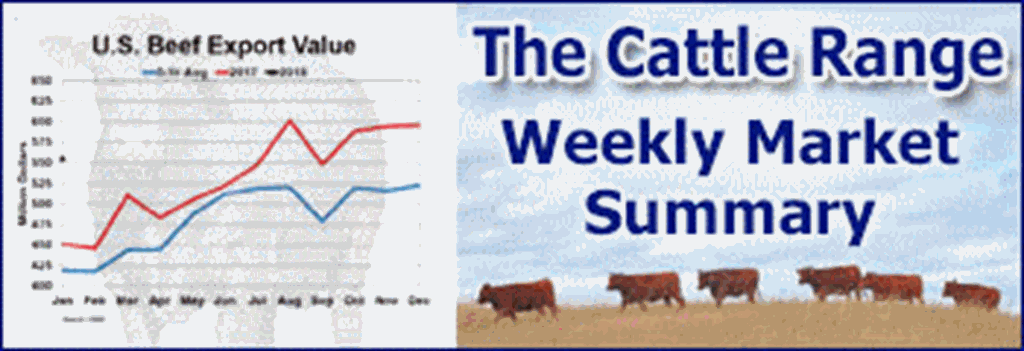U.S. cattle producers do not benefit from the profitable import/export scheme that exclusively benefits the beef packers.
Commentary by Bill Bullard, CEO, R-CALF USA
The U.S. cattle industry underproduces for the domestic market. We simply don’t have enough cattle to satisfy America’s demand for beef. And yet, our industry has bought into the counterintuitive argument that imports and exports are the deciding factor in producer profitability.
We’ve all been told how we need to import a lean grinding product to mix with our higher quality trim to make ground beef, how we export higher quality cuts that command higher prices abroad than what we can sell them for here, and how exports add value to every head of cattle sold in the United States.
Let’s look at some real trade data from 2023 and I’ll be doing rounding to keep it simple.
The No. 1 beef product imported from around the world was unprocessed, frozen, boneless beef. It represented 34 percent of total world beef imports. We imported 449,528.2 metric tons of this frozen, boneless beef at a total value of $2,442,906,000. So, the per unit cost of this No. 1 imported product was $5,434 per metric ton.
Now, the second ranked beef product imported from around the world was unprocessed, fresh or chilled, boneless beef. It represented 15 percent of total world beef product imports. We imported 206,573.9 metric tons of this fresh or chilled boneless beef at a total value of $1,336,350,000. So, the per unit cost of this No. 2 imported product was $6,469 per metric ton.
So, frozen and fresh or chilled boneless beef comprised just under 50 percent of beef commodity imports. This is what the industry tells us is the lean grinding product that we must import to mix with our higher quality trim to make ground beef.
Now let’s look at our two leading commodity beef products that we export around the world.
Our No. 1 leading commodity beef export is unprocessed, frozen, boneless beef. Yes, you heard that right. It’s the same category of commodity beef that we import. It represents 34 percent of our total world commodity beef exports. Yes, you heard that right too. Our exports of unprocessed, frozen, boneless beef represents the same percentage of our exports as it does our imports. We exported 417,823.4 metric tons of this product at a total value of $3,075,183,000. So, the per unit price received for this No. 1 exported beef product was $7,360 per metric ton.
Our second ranked beef product that we export around the world is – you guessed it – unprocessed, fresh or frozen, boneless beef. It represented 24 percent of our total world beef product exports. We exported 296,046.8 metric tons of this fresh or chilled boneless beef and sold it for $3,254,254,000. So, the per unit value received for this No. 2 exported beef product was $10,992 per metric ton.
So, frozen and fresh or chilled boneless beef comprised just under 60 percent of our beef commodity exports.
I’ve thrown out a lot of numbers so let’s recap: About 50 percent of U.S. beef product imports are frozen, and fresh or chilled boneless beef and we buy it for $3,779,256,000, or $5,760 per metric ton. Now this is about $2.61 per pound.
And, about 60 percent of U.S. beef product exports are frozen and fresh or chilled boneless beef that we sell for $6,329,437,000, or $8,866 per metric ton. Now this is about $4.02 per pound.
To distill this down even further, our No. 1 and No. 2 exports are the same type of beef product as our No. 1 and No. 2 imports, but our exports of that same type of product command about $1.41 per pound more than our imports.
Now where have we seen this before?
That’s right, let’s revisit our imports and exports of beef tongues.
The U.S. imported 3,107,163.24 pounds of tongues in 2023 at a total cost of $12,846,000, which is $4.13 per pound.
Then, the U.S. turned around and exported 17,585,873.74 pounds of tongues and sold them for $85,051,000, which is $4.84 per pound.
It looks like the importers and exporters (who, for the most part are one in the same) are simply following the No. 1 rule in the retail business: buy low and sell high.
Our Beef Checkoff Program tells us that U.S. beef is coveted the world over and that USA tongues command a higher price abroad, but we know that the U.S. produces more tongues than we can use domestically. So why do we import more tongues?
The answer is obvious: The U.S. beef packer can sell tongues in the world market for more than it costs them to import: They’re buying low and selling high.
But we also know that U.S. cattle producers do not benefit at all from this profitable import/export scheme that exclusively benefits the beef packers.
Are the U.S. beef packers doing the same thing with frozen, and fresh or chilled boneless beef, our most voluminous imported and exported beef product?
Well, we should certainly try to find out.











